The third episode of our Webinar series -
Dialogues on the Art of Arab Fashion – took place on August 11, 2020, with a conversation between our founder, Dr Reem el Mutwalli and Lebanese designer extraordinaire, Rana Salam. They discussed the book
The Secret Life of Syrian Lingerie co-authored by Rana and Malu Halasa. They talked about how the book came about, the vibrant Syrian culture that inspired it, and people’s reaction to the book.
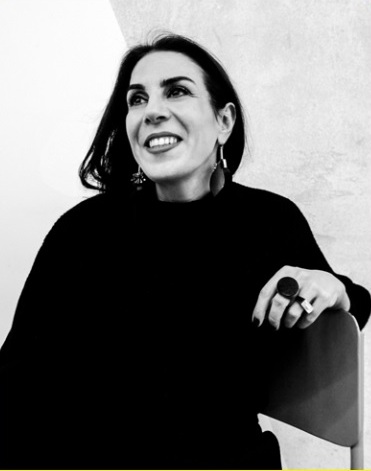 Rana Salam
Rana SalamOur Guest: Rana Salam
Rana Salam has been running her own London, now Beirut-based, design studio for over a decade, specialising in brand creation and re-branding, producing distinctive designs for clients including Harvey Nichols, Art Dubai, Liberty of London, Boutique 1, the V&A and Paul Smith. Rana is known for her understanding and use of Middle Eastern popular art and culture, using vibrant imagery and merging it with the latest design technology to create a unique vision of graphic design and art direction. Her work has been widely published in magazines such as Elle Deco, Wallpaper, Creative Review, Design Week, Aishti, Bespoke, Canvas and Brown Book.
Her studio has a broad experience in developing identities for hospitality and retail such as window displays for Harvey Nichols, the logo and interior graphics for the restaurant Comptoir Libanais in London, and the brand image for the retail stores Bokja in Beirut and Sawani in Jeddah. They also designed the restaurant branding of Slate (Beirut), Kalilah (Jeddah), Ayyame (Kuwait), Filful (Dubai) and Yamama (Bremen/Germany). Rana worked closely with Lina Kanafani, architect David Adjaye, The Smallville Hotel, Bassam Fattouh, and Nada Debs. Rana launched her own line of home collection and accessories, art and prints, and one of a kind objects all sold on her online store
www.ranasalamshop.com.
The highlight of her career is when in 2008, she launched her book
The Secret Life of Syrian Lingerie co-edited with Malu Halasa. The book sold just under 10,000 copies and is now out of print.
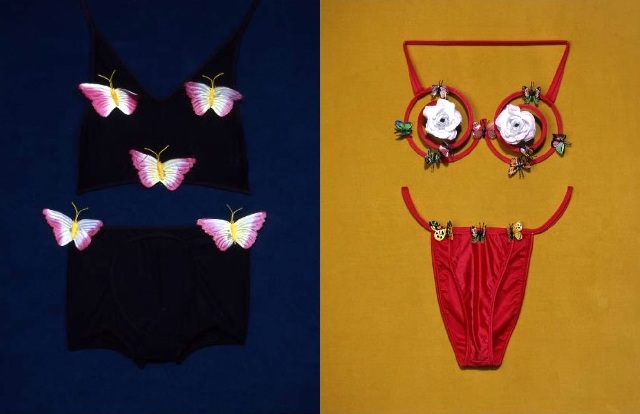 "The lingerie is almost done in a naive sweet innocent way. It is not sick or perverted"
"The lingerie is almost done in a naive sweet innocent way. It is not sick or perverted"Our Theme: The Secret Life of Syrian Lingerie
“Syrian design is schizophrenic. Ages and influences compete with each other. According to Syrian political commentator and novelist, Ammar Abdulhamid (interviewed for this book), the country is ancient and postmodern at the same time. “If you take a cross-section of Syrian culture, you are going to see a spectrum of different cultural values that cross a thousand years, but they all exist right now in one single moment,” he says.Lingerie is no different. Styles zigzag from prim virginal floral arrangements crowning a thong like a wedding corsage, to nippleless leotard reminiscent of Frederick’s of Hollywood. There are colourful plastic butterflies and flowers sewn onto underwire bras and zippered breasts and crotches verging on a crudely innocent version of S&M. Some of the bra-and-panty sets sing and light up. Others can be eaten.
Extract from Introduction of The Secret Life of Syrian Lingerie
According to Rana, the book came about serendipitously after a chance meeting with editor, now co-author, Malu Halasa, who encouraged Rana to turn her private collection of Syrian lingerie into a book. Rana had been collecting these unique pieces of clothing on her frequent visits to Damascus while still living and working in London.
“I wanted to do an exhibition, but Malu insisted. ‘You have to make a book!’ I did not understand the power of a book. But with the book we reached so many more people than an exhibition ever could. It was an eyeopener.”
According to Rana, the book was also a huge eyeopener to the wider public about the role of sexuality in the Middle East.
“The lingerie industry in Syria is a bit of an ‘underground culture’ but definitely not the big taboo many people assume it to be. We are far more comfortable with our sexuality than our modest way of dress would suggest.”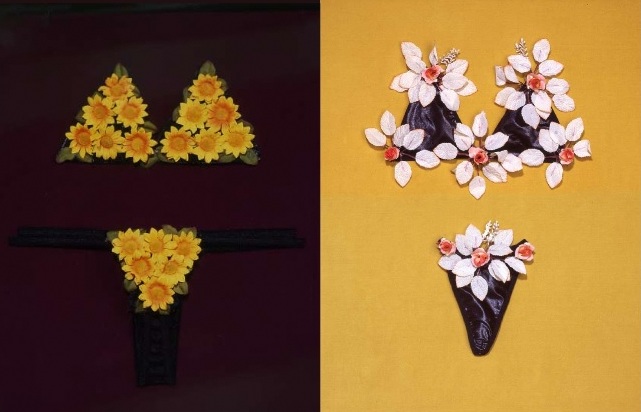 "When I went to the main lingerie shop in Souk Al Hamidiyeh, I didn't feel it was peculiar or out of the ordinary. I felt I was in a candy or toy store." Quote and image from the book.
"When I went to the main lingerie shop in Souk Al Hamidiyeh, I didn't feel it was peculiar or out of the ordinary. I felt I was in a candy or toy store." Quote and image from the book.The Book
From first glance at the cover of the book, it is evident that Rana approached the book as a designer rather than an author. It is a work of art in its own right. The two co-authors make it clear that this a collaboration by many contributors, from photographers to poets, to writers, and designers. The book is not demure, yet it is not offensive either. It is a celebration not so much of sexuality, as of the joy of life.
The lingerie featured in the book ranges from quirky and bizarre, to humorous and playful. It is bright, plastic, and fun, yet it is never pornographic or distasteful.
Rana and Malu divided the book into chapters covering the industry and business side of the lingerie culture; essays by, and interviews with Syrian writers and filmmakers; interviews with Syrian women, as well as photo-essays, and poetry by Syrian artists.
In their conversation Dr Reem and Rana touched on a few main themes when discussing the making of the book and the lingerie industry.
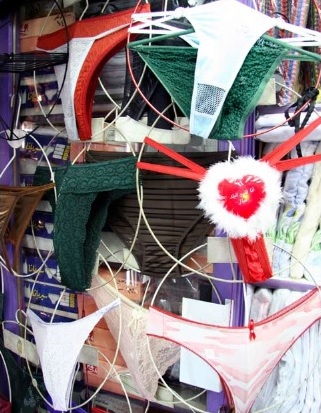 Kitchy and inventive, a display sells thongs in Lingerie Baqdounis
Kitchy and inventive, a display sells thongs in Lingerie BaqdounisThe industry
As a result of the war and economic sanctions, the Syrian economy is mostly self-sufficient. With virtually no imports, everything is produced locally, using locally sourced materials. The same goes for the lingerie industry. Local (male) designers use locally sourced materials to create unique items not found anywhere else. Some of these items are quirky and fun items like plastic toys, mobile phones, fake flowers, and more. Even though import is limited, the lingerie is exported, with Saudi Arabia their biggest international market. As a designer herself, Rana understands the concept of designing with limited resources well - it creates fertile ground for creative thinking and problem solving!
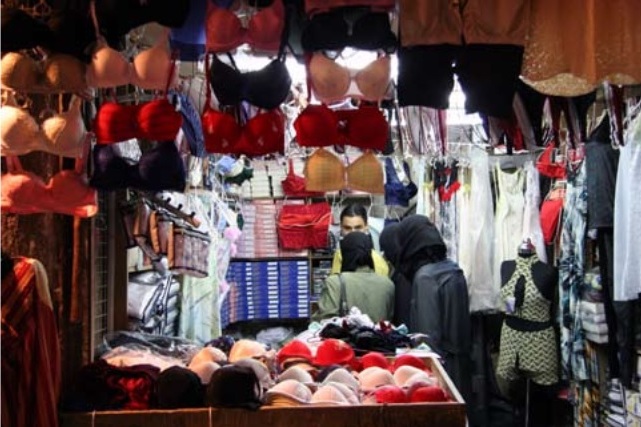 In souks across Syria, women buy their intimate apparel from men
In souks across Syria, women buy their intimate apparel from menThe customers
Contrary to popular belief, the lingerie shops do not cater just for men and their sexual fantasies. Most of their clients are women, either shopping for themselves, as gifts for their friends, or in many cases mothers, aunts, and mothers-in-law shopping for their daughters and nieces. Women enjoy and appreciate these designs as much as the men in their lives. It is quite common to see fully covered and veiled women in the souks buying playful underwear from male shop assistants and designers.
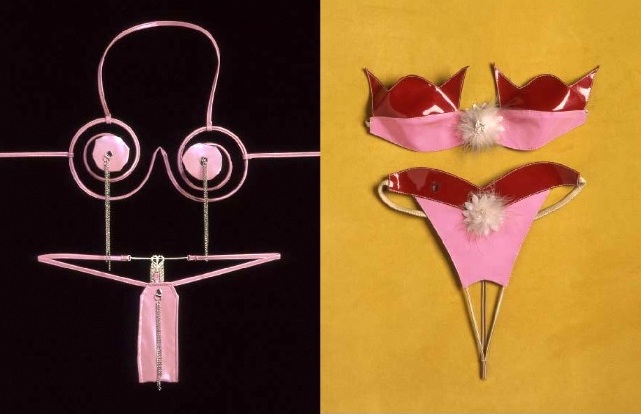 Although Middle Eastern society expects women to be a virgin and get married -the goody-two-shoes, all saintly society on the outside - on the inside, people do everything they want. So the lingerie is a contradiction. You can't discuss it in public, but privately it is a different matter." Quote and image from the book.
Although Middle Eastern society expects women to be a virgin and get married -the goody-two-shoes, all saintly society on the outside - on the inside, people do everything they want. So the lingerie is a contradiction. You can't discuss it in public, but privately it is a different matter." Quote and image from the book.The anthropology and culture
According to Rana, the title of the book ‘Secret life’ refers to the many layers of anthropology within the Syrian culture, including the unexpected liberal attitude Syrian people have towards sex and sexuality; the fact that men and women feel equally empowered and free to express themselves in a playful and pleasurable way, and the idea that conservative, modest, and veiled outer garments belie the fun, pleasure, and humour with which women experience their bodies and sexuality in private.
“According to the Quran women are paradise on earth for men. In Syria in particular, but also in the wider Arab world, that paradise is enjoyed and celebrated by men and women equally. It has nothing to do with oppression and everything to do with self-expression and fun.”
Rana’s research revealed that the conflict and war in Syria had a positive influence on the lingerie industry.
"People are looking for some light-heartedness, fun, humour, and frivolity among all the negativity and trauma. It is also well-documented that people in war-affected regions crave more intimacy and affection."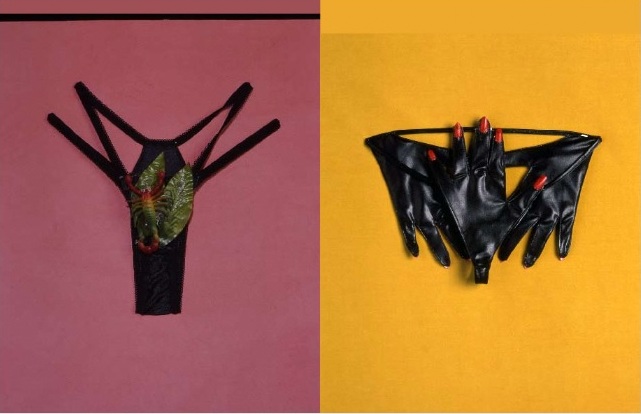 "What is different about this lingerie is that it is linked to a small category of people. There are subcultures in Syria, and subcultures everywhere else in the world that would be interested in this kind of lingerie." Quote and image from the book.
"What is different about this lingerie is that it is linked to a small category of people. There are subcultures in Syria, and subcultures everywhere else in the world that would be interested in this kind of lingerie." Quote and image from the book.Reaction to the book
The fact that 10 000 copies of the book have been sold out is testament to the success of the book.
“I must have done something right!” Rana laughs.
“After receiving such positive feedback from such a varied audience, I am considering doing another book about people’s reaction to this book!”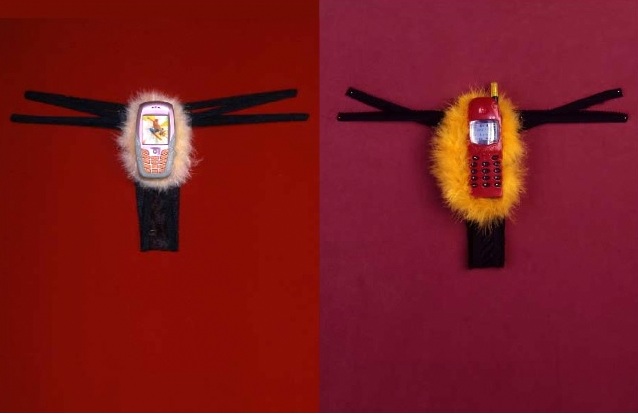 "I can tell you that lingerie means a lot for some women in Syria while it means nothing to others. Some Syrian women think that buying lingerie is a waste of money and it has no role in their sexual lives. While for some traditional people it is a must to buy lingerie with all different colours and styles before getting married." Quote and image from the book.
"I can tell you that lingerie means a lot for some women in Syria while it means nothing to others. Some Syrian women think that buying lingerie is a waste of money and it has no role in their sexual lives. While for some traditional people it is a must to buy lingerie with all different colours and styles before getting married." Quote and image from the book.Conclusion
This book is not an academic book, it is a light-hearted look at a small section of the fashion and design industry in Syria, which has a rich and important textile, design, and fashion heritage. It is part of the culture and the way of life in Syria.
As Dr Reem explains,
“as preservers of fashion and textile culture, it is not our place to pick and choose bits of a culture that we perceive as worthy to preserve, we have to preserve the whole story, and this lingerie is part of the story.” At The
Zay
Zay: (Arabic: costume, Pl. azyaā’), a set of clothes in a style typical of a particular country or historical period. Initiative, we are proud to include some of these items in our collection.
Rana confirmed this belief.
“The Syrian lingerie industry is an important part of the Syrian economy, it helps to demystify sexuality, it dispels the myth that all Arab or Muslim women are sexually oppressed, and it shows that we have a sense of humour, that beneath our modest garments, we are creative and imaginative.”Next in our webinar series
Our next event in this very popular series will be on Tuesday, September 8, 2020, when Dr Reem el Mutwalli talks to Egyptologist, Dr Colleen Darnel about Magic and Jewellery in Egypt. Do not miss this opportunity to become part of the conversation. Book your place
here.




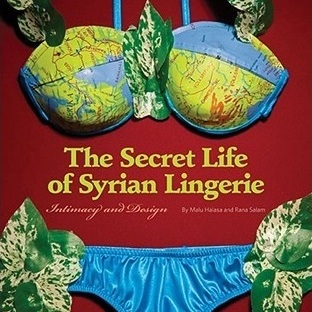
 Rana Salam
Rana Salam "The lingerie is almost done in a naive sweet innocent way. It is not sick or perverted"
"The lingerie is almost done in a naive sweet innocent way. It is not sick or perverted" "When I went to the main lingerie shop in Souk Al Hamidiyeh, I didn't feel it was peculiar or out of the ordinary. I felt I was in a candy or toy store." Quote and image from the book.
"When I went to the main lingerie shop in Souk Al Hamidiyeh, I didn't feel it was peculiar or out of the ordinary. I felt I was in a candy or toy store." Quote and image from the book. Kitchy and inventive, a display sells thongs in Lingerie Baqdounis
Kitchy and inventive, a display sells thongs in Lingerie Baqdounis In souks across Syria, women buy their intimate apparel from men
In souks across Syria, women buy their intimate apparel from men Although Middle Eastern society expects women to be a virgin and get married -the goody-two-shoes, all saintly society on the outside - on the inside, people do everything they want. So the lingerie is a contradiction. You can't discuss it in public, but privately it is a different matter." Quote and image from the book.
Although Middle Eastern society expects women to be a virgin and get married -the goody-two-shoes, all saintly society on the outside - on the inside, people do everything they want. So the lingerie is a contradiction. You can't discuss it in public, but privately it is a different matter." Quote and image from the book. "What is different about this lingerie is that it is linked to a small category of people. There are subcultures in Syria, and subcultures everywhere else in the world that would be interested in this kind of lingerie." Quote and image from the book.
"What is different about this lingerie is that it is linked to a small category of people. There are subcultures in Syria, and subcultures everywhere else in the world that would be interested in this kind of lingerie." Quote and image from the book. "I can tell you that lingerie means a lot for some women in Syria while it means nothing to others. Some Syrian women think that buying lingerie is a waste of money and it has no role in their sexual lives. While for some traditional people it is a must to buy lingerie with all different colours and styles before getting married." Quote and image from the book.
"I can tell you that lingerie means a lot for some women in Syria while it means nothing to others. Some Syrian women think that buying lingerie is a waste of money and it has no role in their sexual lives. While for some traditional people it is a must to buy lingerie with all different colours and styles before getting married." Quote and image from the book.